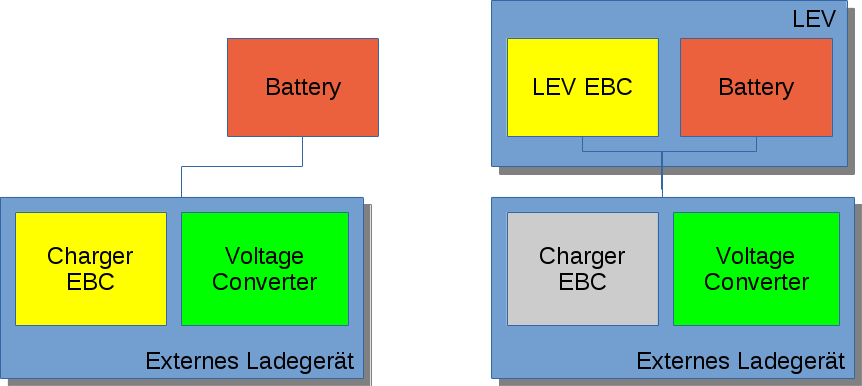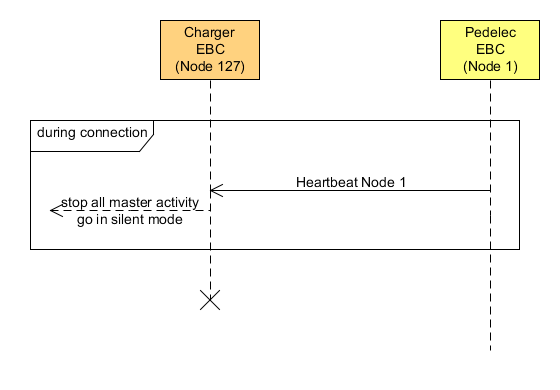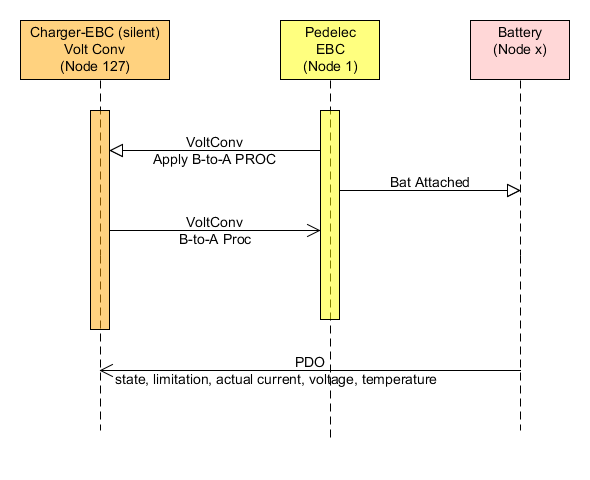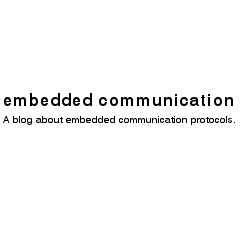EnergyBus Charging procedure
This article explains the EnergyBus charging procedure of a EnergyBus battery together with an EnergyBus charger with or without EnergyBus Controller. Especially the data exchange between the components in covered.
Different Use Cases
Two different use cases are possible with EnergyBus. On the one hand a single battery may be charged at home at a charger.
On the other hand a complete LEV can be charged at a public charging station.

Using EnergyBus terms the first case (single battery) means that an EnergyBus Controller (EBC) must be present in the charger. In the 2nd case the EnergyBus controller of the LEV is and remains active and the charger has to detect it and disable its own EBC.
Charging with EBC in LEV
In this case the EBC in the charger has to detect, that there is an EBC already active in the LEV and the charger’s EBC must be deactivated. As defined in the EnergyBus specification, the EBC in the vehicle has the node-ID 1. So if the charger detects heartbeat messages from node 1, it means that an EBC is present and that the own EBC has to be deactivated.

The EBC (Node-ID 1) additionally detects that a charger (EB: Voltage Converter) is available and the EBC reads the relevant data from the battery and writes them into the charger using the CANopen service SDO. These static battery data are:
- Global Instance number
- Node-ID of battery
- Device alarm capability
- Type of battery
- rated battery Wh capacity
- max/min voltage
- max current
- max/min temperature

At start-up of the charging procedure the voltage of the charger is switched on and the EBC cyclically asks the charger, which action the battery (attach, detached) shall do. The EBC cyclically write these commands to the battery. Critical process values such as currents and actual voltages, battery temperatures, limitation requests and the status word of the battery are directly send by PDO to the charger.
Charging without Battery
This case, previously called 1st case – single battery – is less complex than the situation described above. Here the EBC in the charger realizesed the EBC functions and because of the fact that the EBC is inside the charger the data exchange between both parts of the application is much easier.
Nevertheless the charger has to take over the LSS master functionality of the EBC and assign a node-ID to the battery in order to enable a CANopen communication.
Analysis and Simulation
The company emotas embedded communication GmbH, which is active in the standardization of EnergyBus offers various products around EnergyBus. Among them there is the free EnergyBus Demo-Kit, which is able to simulation various EnergyBus components such an EBC, a battery, a charger or a motor controoller. The CANopen DeviceExplorer by emotas comes with an EnergyBus extension that interprets the CAN communication between the components according to the EnergyBus specification.
